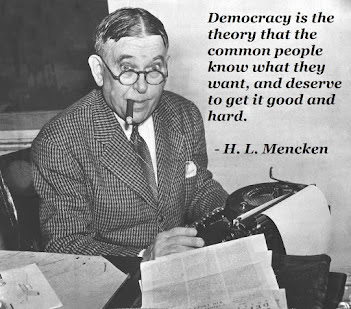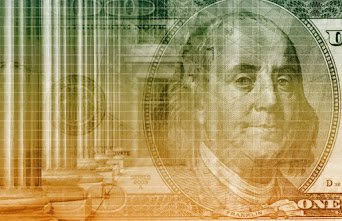"The Fed's Magic Elixir"
How more of the same "medicine" is likely to poison the patient.
by Bill Bonner
“The banks we regulate, in contrast, are well protected from
bank runs through a robust array of supervisory requirements.”
~ Michael Barr, top bank regulator for the Fed, last Thursday
San Martin, Argentina - "The 2nd largest…and 3rd largest…bank failures in US history continue to dominate the financial headlines. CNN Business: "Dow falls 500 points as banking fears spread." From our point of view, the failures were expected. We were waiting for things to break…now, they’re breaking. And now, somehow, somewhere, sometime, by someone…the losses must be reckoned with. Who will pay them? That is our subject for today.
Bag Holders: “No losses will be borne by the taxpayers” said Joe Biden on Monday. Where were the “fact checkers”…the truth seekers, on the alert for misinformation and lies? They must have been taking the day off. For if there were one thing you could count on it is this: ultimately, the taxpayers will have to bear the losses, probably in the form of inflation. As more banks break, the Fed will have to bail them out…and eventually, it will abandon its rate increases. Consumer prices will rise; households will pay.
Who else would cover the losses? Who always pays? The 1980 S&L crisis – in which members of Congress, the Keating Five, played a leading role – cost taxpayers $124 billion.
The 2008 bank bailout, TARP, cost $500 billion. Investigative reporter, Jim Bovard, says that over 4,000 financial institution employees got $1 million+ bonuses as a result.
The ‘zero rate’ fantasy of the Fed, after 2008, cost US household savers $4 trillion.
And thanks to the reform measures of Barney Frank and Elizabeth Warren, in 2010, which were intended to prevent another banking crisis, banks are now saddled with $600 billion in unrealized losses on their portfolios of government or government-backed securities. That is not just a ‘paper’ loss. That is a real loss. Someone will have to pay.
Magic Elixir: Usually, you have to pay to borrow money…which forces you to think carefully about what you’re going to do with it. If the interest rate (after inflation) is 4% (the ‘hurdle rate’)...you need to find an investment that will give you more than 4% interest. Otherwise, you will stumble on the hurdle, lose money…and drop in the esteem of your friends, family and rivals.
Normally, too, there aren’t a lot of investments that will pay off for you…for the very obvious reason that when there are a lot of good investments, people borrow to make them, and the hurdle rate rises. The system is normally self-regulating, preventing too much speculation and too much debt. But along comes the Fed with its magic elixir – interest rates below inflation. Suddenly, the ‘hurdle’ disappears. Almost any gamble – cryptos, NFTs, new tech, Treasury bonds! – could pay off.
And so, it came to pass, between 2009 and 2022, that people borrowed wantonly. They invested recklessly. And they lost prodigiously. All fine and good. But what now? Will the deciders decide that they – the ones most responsible for the borrowing bacchanalia – will pay the losses? Barney Frank, Elizabeth Warren, Joe Biden, Janet Yellen? No, in their wisdom, they will decide that someone else will pay.
But this is the nature of the regulation-rich, responsibility-poor, judgment-free world. No one should have to bear the costs of his own ill-health, bad judgment, incompetence, job loss or bank failures. The ‘unhoused’ person – who was evicted for not paying the rent – believes someone should provide a decent home for him. The ‘unwed’ mother expects the government to provide her with childcare. Whatever the need…the misfortune…or the misconduct, someone else should pay for it. The insurance company…the government…the rich…someone should bail you out!
Whence Cometh The Capital? In the case at hand, the feds now say the bank’s wealthy shareholders will lose, but not the wealthy depositors. Currently, deposits are insured by the FDIC up to $250,000. But 97% of Signature’s deposits were for more than that amount. They were accounts used by hedge funds, corporations, and speculators, not by Mom and Pop savers.
The bank itself no longer has the money to make those depositors whole. So, where will the money come from? The deciders who were supposed to make the banks safe? Or the Wall Street hustlers who used the Fed’s cheap money to make billions – trillions – over the last 12 years? Or, the Fed governors, whose ultra-low interest rates created the bubble that is now losing air?
Joe Biden says the taxpayers won’t pay a cent. Whoopee! The losses have vanished. What will happen next? Ray Dalio describes a scenario. Markets Insider: "In his newsletter Tuesday, the Bridgewater Associates founder called the bank turmoil a "very classic event in the very classic bubble-bursting part of the short-term debt cycle." The cycle lasts roughly seven years, Dalio explained. In the current phase, inflation and curtailed credit growth catalyze a debt contraction, according to Dalio, and that causes contagion until the Federal Reserve returns to a policy of easy money.
Most likely, a few more bank failures…and the feds will take another giant step forward towards a risk-free world. They will take over the entire banking system…including $9 trillion in uninsured deposits. But remember. The feds cannot make the losses go away. They can only move them around…from the people who deserve them, to the people who don’t.
Stay tuned..."
o
Joel’s Note: "There are sharks in the canals, people! Such are the unintended consequences of government intervention into otherwise self-correcting markets. Since the 2008 credit crisis (also caused by the Fed’s “magic elixir,” in the form of ultra-low rates), risk in the system has been concentrated into fewer and fewer hands. And now, as larger institutions – like Goldman Sachs in the US and HSBC in the UK – swoop in to pick up the pieces of recently busted banks, like Silicon Valley Bank, the number of players left in the game dwindles… as the risk of an epic, systemwide crisis approaches near certainty.
“They blew up a gigantic speculative bubble,” wrote Tom Dyson to BPR members in yesterday’s market note, “the biggest of all time in all things, and now that bubble is bursting. So I’m not surprised by any of the events over the last week. I expect to see many more defaults, bank runs, corporate bankruptcies, layoffs and write downs before this is over. I also expect to see more politically-connected bailouts, money printing and currency debasement.”
So, where does the Fed’s marvelous medicine leave us now? “Currency debasement and falling prices are the two ways this situation gets resolved,” continued Tom.
Falling prices is the visible way wealth claims get incinerated… you might say, it’s the “honest” way. I’m referring to defaults, write downs, bank collapses, business closures etc. […] Currency debasement is the sneaky – or dishonest – way of digesting losses, using the currency to absorb the losses, creating a collective or socialized loss. We sometimes call this ‘soft default’. The bailout of U.S. bank depositors over the weekend is a good example of this."




















